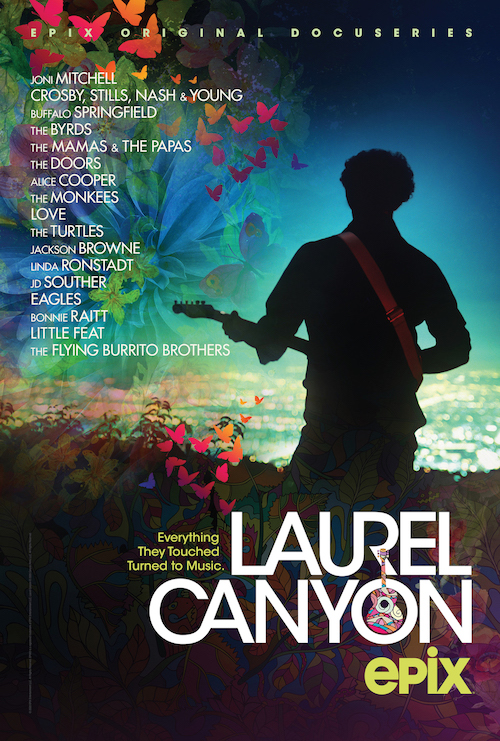 A two-part documentary series, Laurel Canyon, premiered in May 2020 on premium television network EPIX. As the riveting film, directed by Alison Ellwood (History of the Eagles) unfolds, it explores the lives and evolution of the musicians – the Byrds, Buffalo Springfield, the Mamas and the Papas, Crosby, Stills, Nash & Young, Joni Mitchell, Linda Ronstadt, the Doors, Jackson Browne, Eagles, and many more – who inhabited that unique part of the Los Angeles music scene. Through rare and newly unearthed footage and audio recordings, the documentary features an intimate portrait of the artists who created a music revolution of the ’60s and ’70s that would change popular culture.
A two-part documentary series, Laurel Canyon, premiered in May 2020 on premium television network EPIX. As the riveting film, directed by Alison Ellwood (History of the Eagles) unfolds, it explores the lives and evolution of the musicians – the Byrds, Buffalo Springfield, the Mamas and the Papas, Crosby, Stills, Nash & Young, Joni Mitchell, Linda Ronstadt, the Doors, Jackson Browne, Eagles, and many more – who inhabited that unique part of the Los Angeles music scene. Through rare and newly unearthed footage and audio recordings, the documentary features an intimate portrait of the artists who created a music revolution of the ’60s and ’70s that would change popular culture.
One of the film’s frequent interview subjects is the well known photographer, Henry Diltz, who became close with many of the era’s stars and documented it with countless images, scores of which are used in the film to great effect. He shares, in significant detail, his first-hand accounts of the artists he befriended and the iconic events he documented.
Early in the film, Diltz says, “I made a list of everyone I could think of that I photographed in Laurel Canyon,” as his shots of such figures as Mama Cass, Micky Dolenz, Jackson Browne, David Crosby, and more, are shown. “Lot of people.”
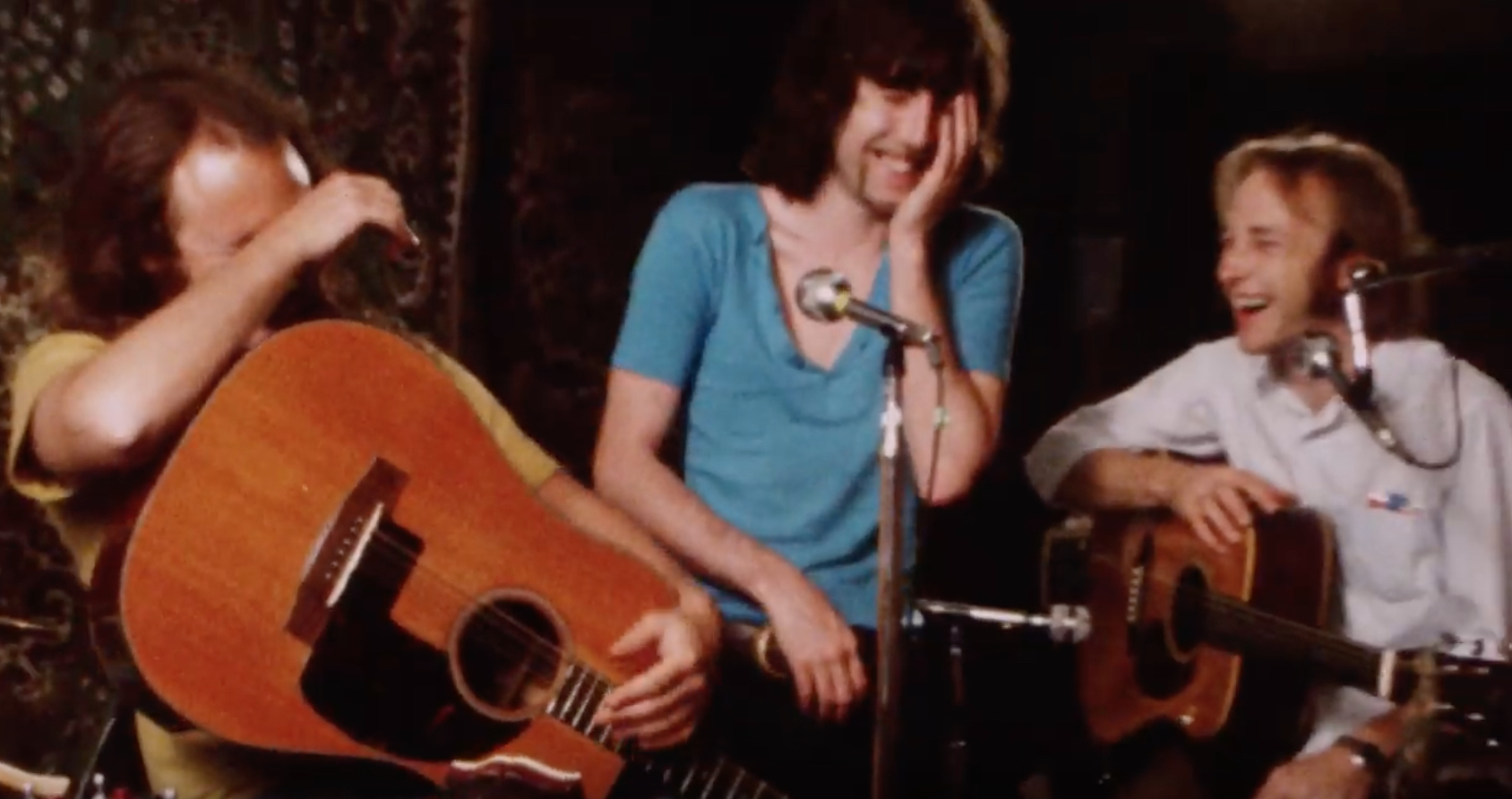
Crosby, Nash and Stills, from EPIX’s Laurel Canyon
The producers also crowd-sourced fans’ personal film footage, photos and other materials that feature artists in the Canyon, the Sunset Strip and other area locales.
Laurel Canyon features all-new, original interviews with many of the legendary artists. It all unfolds beautifully, taking the viewer back to that fertile music scene.
“We were at the very center of this bubble of creativity and friendship,” says Graham Nash.
“[My home] turned out to be a gathering place,” says Dolenz. “We began to throw these soirees along with a ping-pong tournament. Up the street were the Turtles. Zappa was a little further down. It was a very small community of musicians and long-haired weirdos.”
The enclave and its unique geography were also part of what made it special. “It was so magical,” says Chris Hillman, who moved there in ’65. “Literally within four or five minutes you could be down on the Sunset Strip into Hollywood.”
“Once you got above 20 or 30 of us living there,” says his Byrds bandmate, David Crosby, “it was kind of a community. We would go around and visit one another quite a bit.”
The film pinpoints many moments that changed the face of popular music.
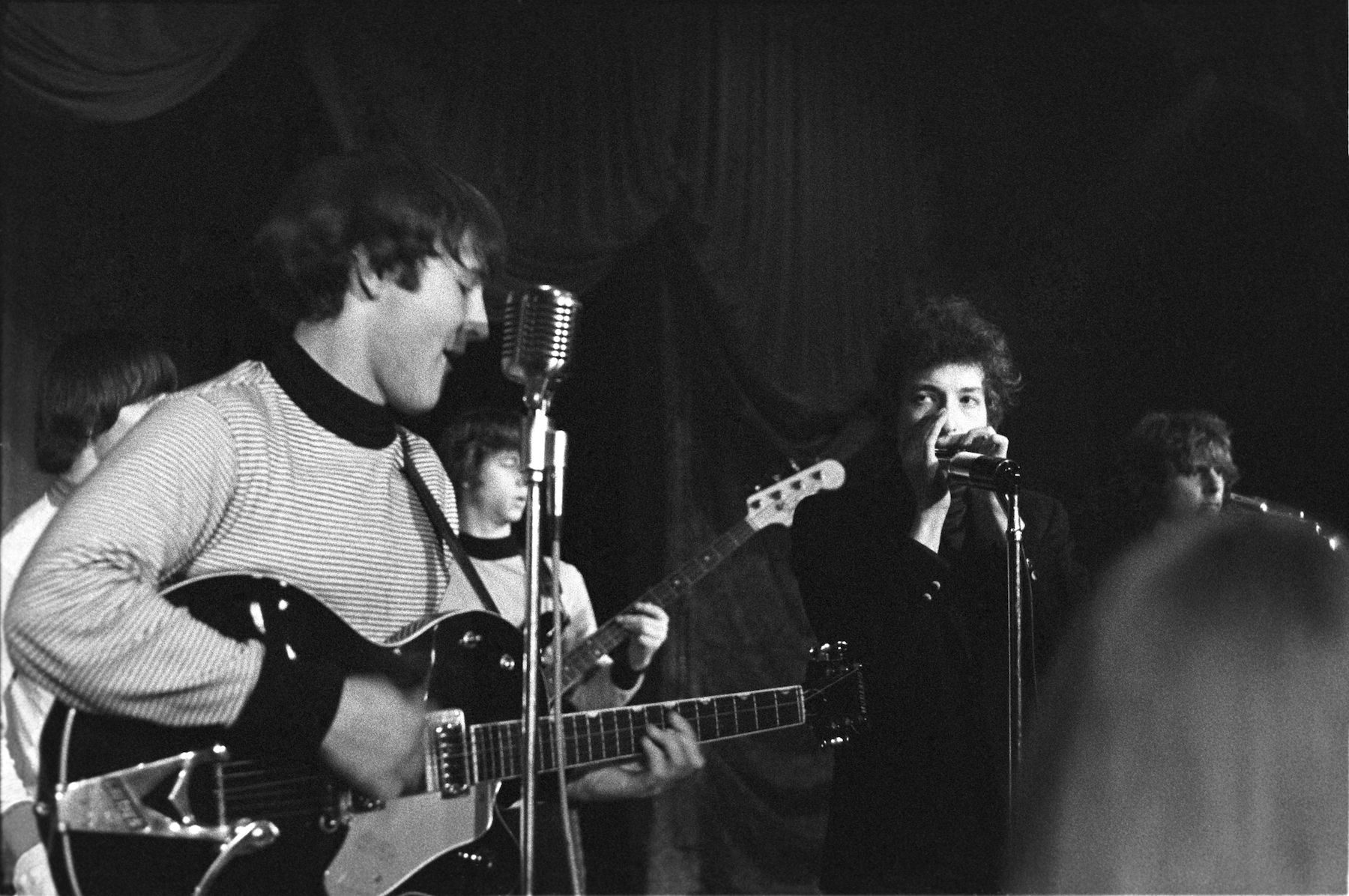
Bob Dylan, on stage with the Byrds, at Ciro’s in West Hollywood, March 26, 1965 (Photo © Henry Diltz; used with permission)
When the Byrds drastically reinterpreted Bob Dylan’s acoustic “Mr. Tambourine Man” in 1965, with a much richer version, filled with harmonies and jangly guitar, the public embraced the song, sending it to #1 on the Hot 100.
“[Dylan] loved what we did,” says Hillman.
The Byrds were regulars at Ciro’s, a nightclub in West Hollywood. Roger McGuinn recalls, “I remember Bob came and said, ‘Wow, you can dance to it!’ He got on stage with us.”
“The next day,” says Crosby, “everyone in town was talking about us. All of a sudden, people were lining up. It was every kid’s dream.”
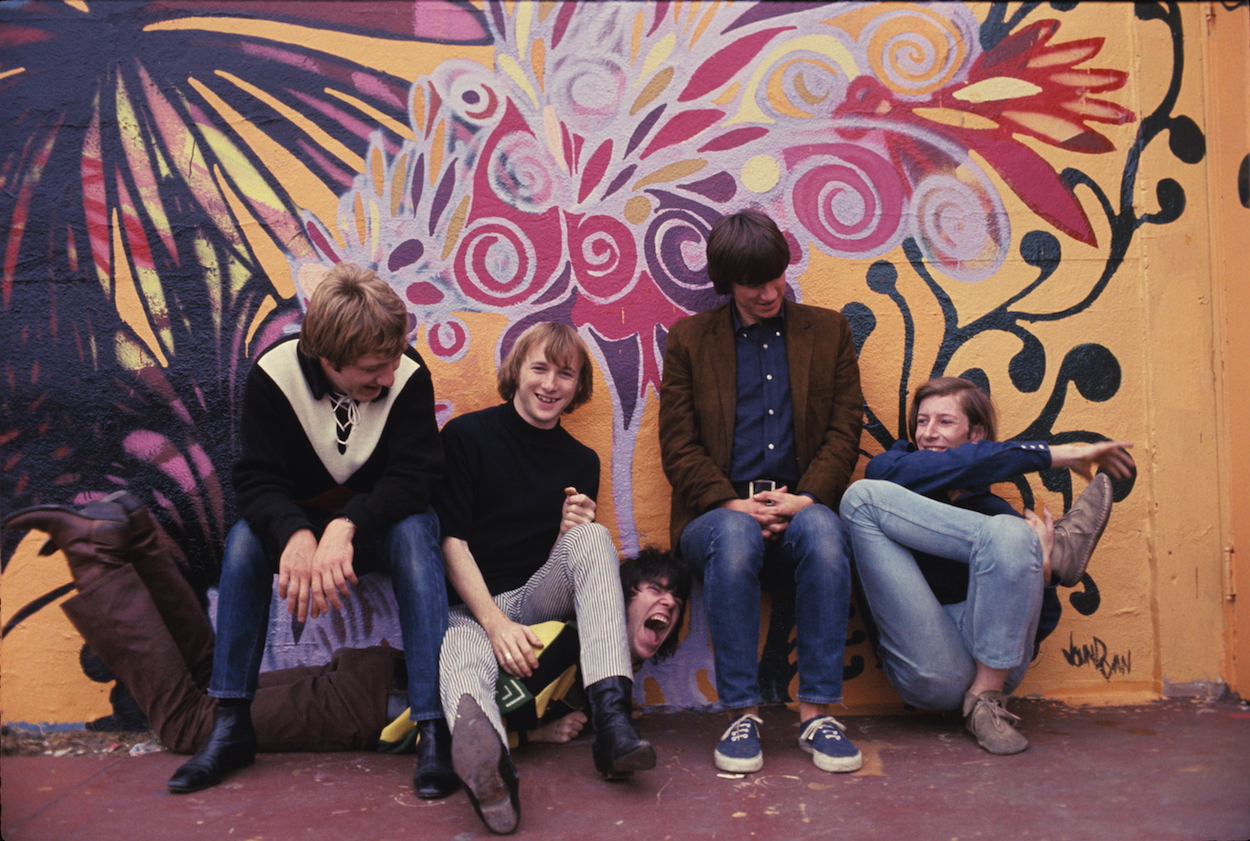
Buffalo Springfield (Photo © Henry Diltz; used with permission)
“When I heard that electric version of this song, it inspired me to go to California to start a band,” says Richie Furay.
Soon, he would form Buffalo Springfield with Stephen Stills, Neil Young, Bruce Palmer and Dewey Martin.
“We were creative people,” says Furay. “We were young. We were ambitious. The spectrum we covered was incredible.”
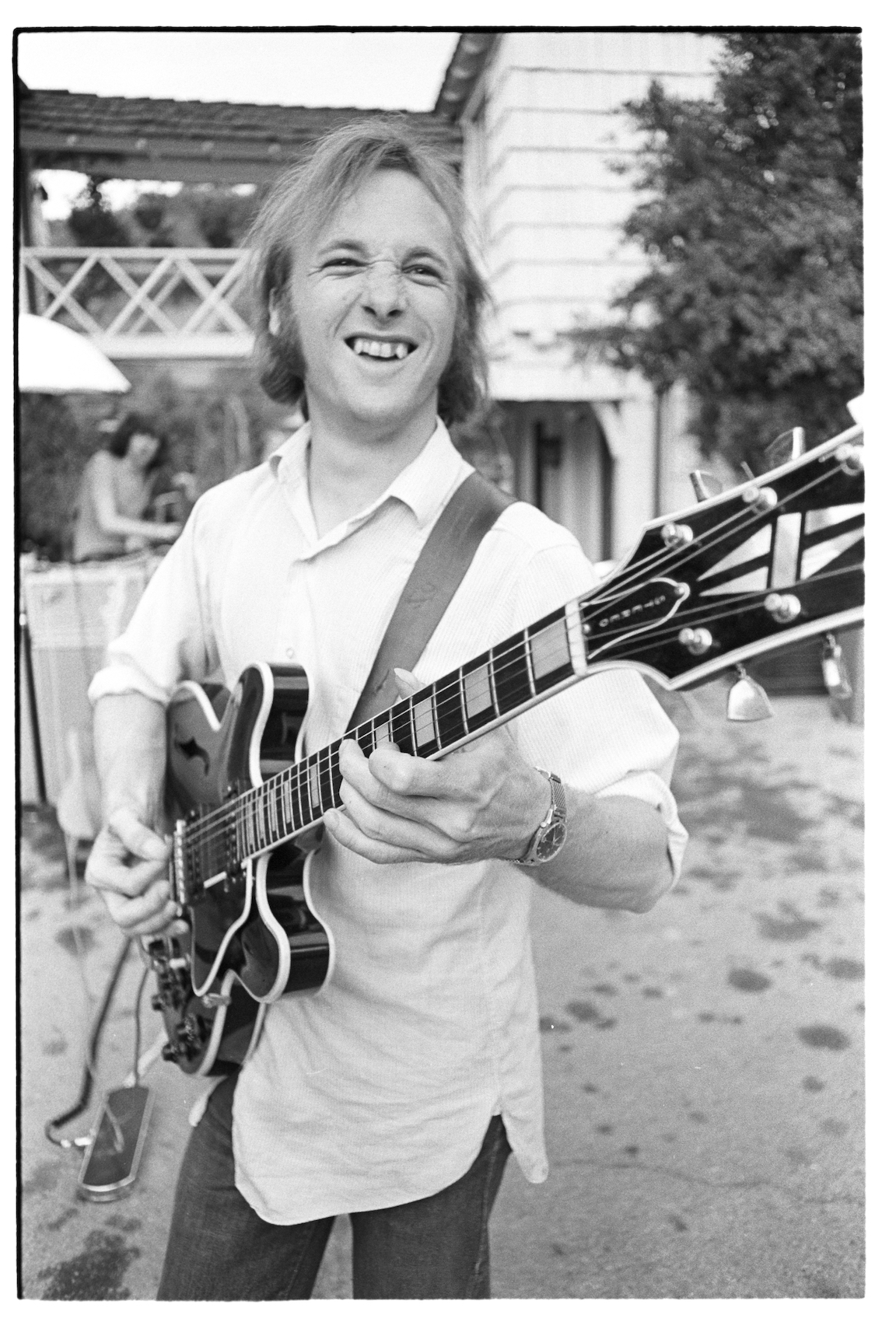
Stephen Stills at Peter Tork’s house (Photo © Henry Diltz; used with permission)
Much of the community’s musical output is featured in some marvelous footage and through the neighborhood’s legendary soundtrack: The Turtles’ “Happy Together,” the Mamas and the Papas’ “Creeque Alley,” the Doors’ “Break on Through.”
Interviews with Furay, the Monkees’ Dolenz and Mike Nesmith, and Stills himself, explain the genesis of the latter’s “For What It’s Worth,” which stemmed from the clashes between teenagers on the Sunset Strip and police, that took place in 1966. “I get home, pick up an acoustic guitar, and all of a sudden it turns into a song,” says Stills.
Buffalo Springfield’s recording became the band’s biggest hit and an anthem that still resonates.
When they performed the song at 1967’s Monterey Pop festival, they were joined on stage by David Crosby (but minus Neil Young).
Watch them get introduced by Stills’ close friend, Peter Tork
“It didn’t bother me that much at the time,” says Croz’s bandmate, Chris Hillman. Several months later, though, Crosby and the Byrds parted ways.
Later that year, Crosby was selected to produce the debut album from a new singer-songwriter, known to everyone by her middle name, Joan.
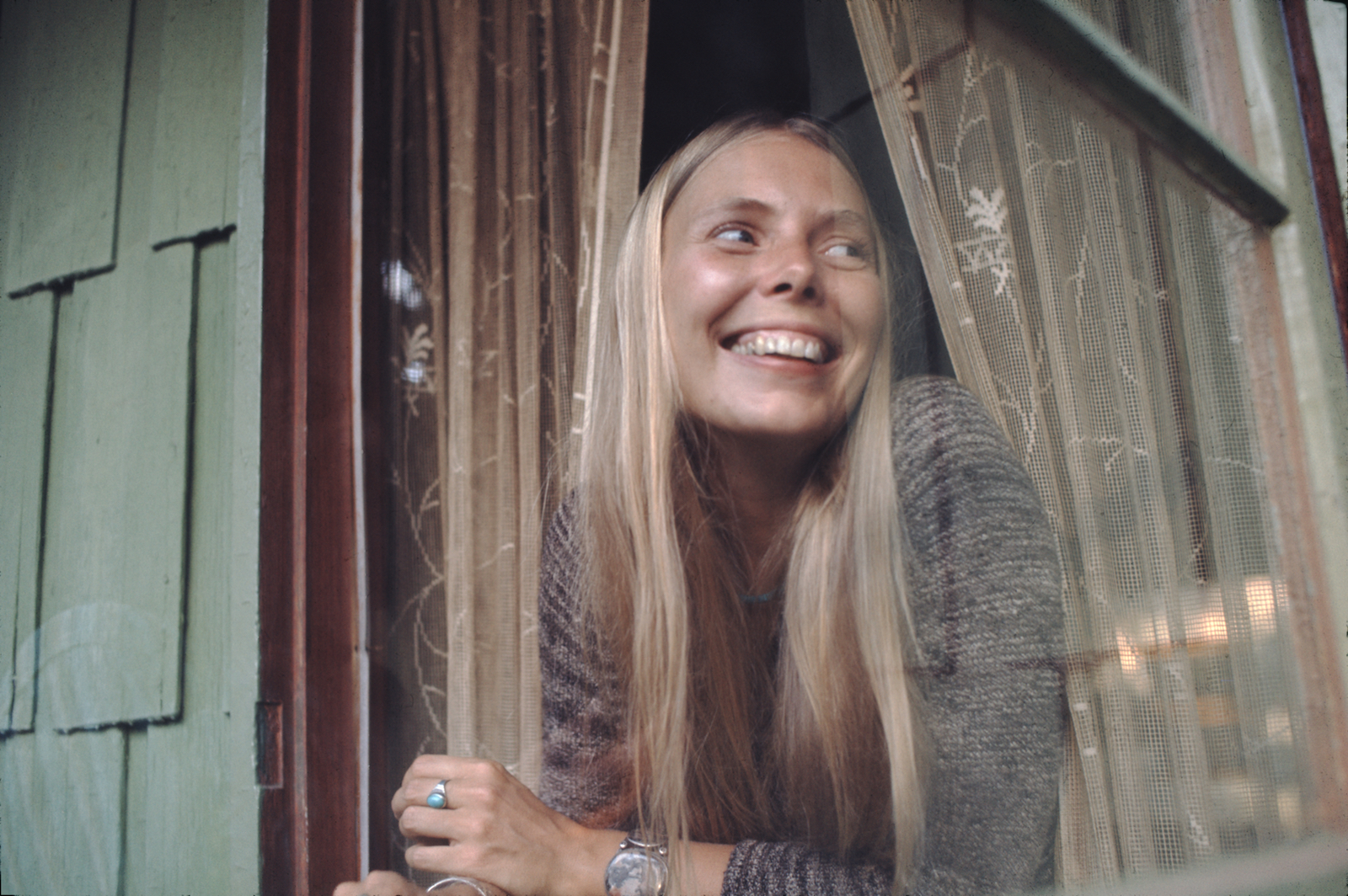
Joni Mitchell at her home in Laurel Canyon (Photo © Henry Diltz; used with permission)
Within two years, the performer, now known professionally as Joni Mitchell, was a significant star, and had settled into a bungalow in Laurel Canyon.
Diltz was hired by her management to photograph her for the 1970 album, Ladies of the Canyon. As he approached her house with his partner, Gary Burden, “[Joni] was leaning in the window waiting for us. Luckily Gary got into a conversation with her which allowed me… to just keep clicking away while she was talking.” The landmark LP included “The Circle Game,” “Big Yellow Taxi,” and “Woodstock.”
One of the pivotal figures in the Laurel Canyon landscape and in the documentary is Cass Elliot. “She saw herself as a hip Barbra Streisand,” says Michelle Phillips of the Mamas & the Papas. “Her house was at the center of everything, open twenty four hours a day [with] a very wide circle of friends.”
Related: Our story on the Mamas & the Papas’ “Creeque Alley”
“Cass loved introducing people,” Henry Diltz tells Best Classic Bands. “She was always on TV programs. Once it was Cream and she invited Eric Clapton to her home. She called me and said ‘I’m having some friends over. Come on up.’ David Crosby brought Joni and said to her, ‘Play us a tune,’ so she sang the entire album!
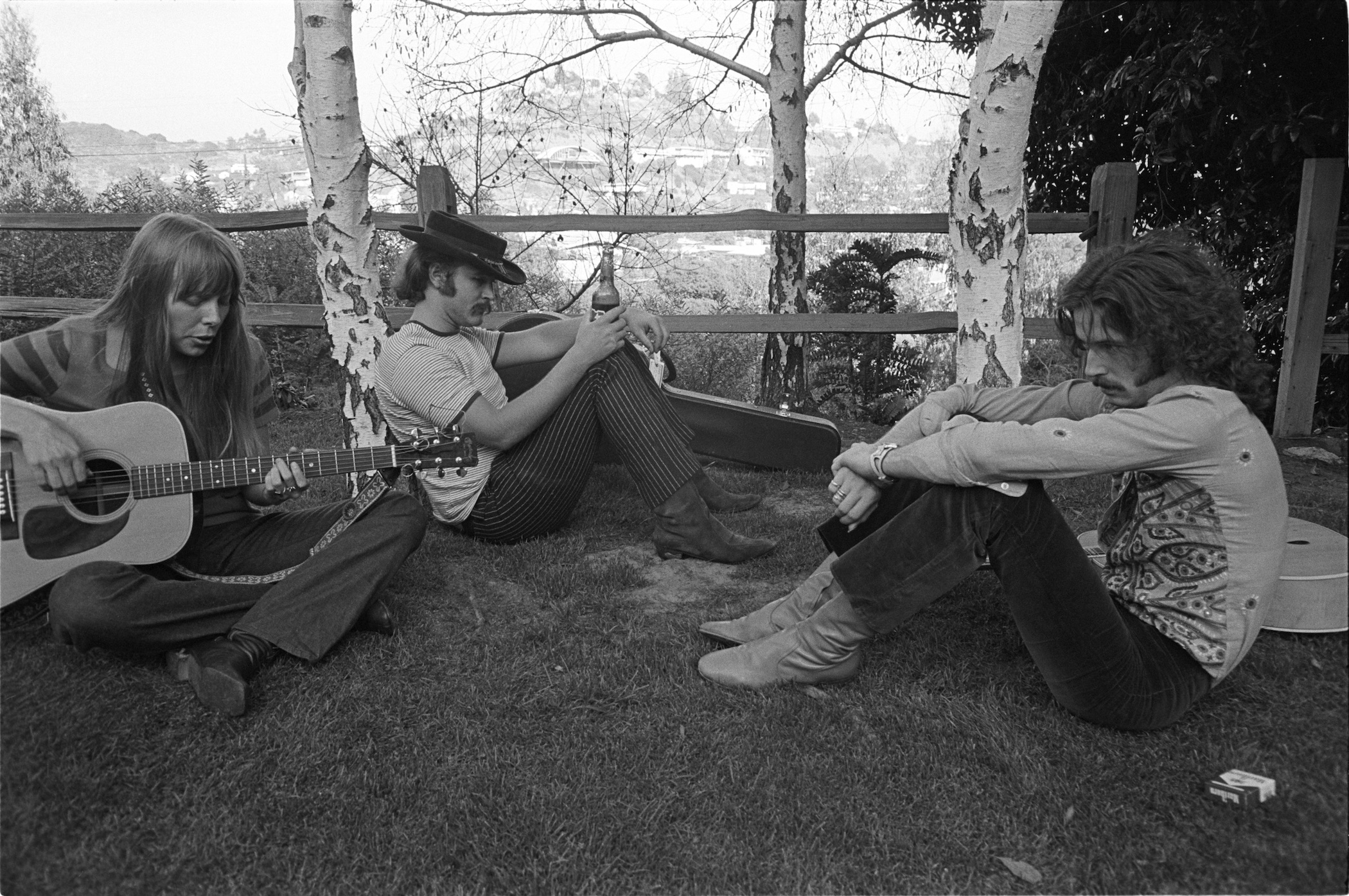
Joni Mitchell, with David Crosby under the birch trees as Eric Clapton watches intently, at Mama Cass’ house, 1968 (Photo © Henry Diltz; used with permission)
“Clapton was staring at her fingers. This legendary guitarist had never seen that [style of playing] before!”
***
Part two of the documentary includes extended segments on historic events that unfolded in 1969 and 1970 that took place well beyond the scope of what was going on in Laurel Canyon. Two occurred within weeks of each other in August 1969: the murders by the Manson family, and Woodstock.
“We were in this beautiful bubble,” says Graham Nash. “Those murders put a pin right in that bubble and it exploded. It was too close, too real.”
Related: Our interview with Henry Diltz on his famed CS&N album cover photo
“Suddenly, hippies were not harmless anymore,” says Alice Cooper.
At the time, Diltz was already in Bethel, New York, preparing to shoot the 1969 Woodstock Music & Art Fair. He tells Best Classic Bands, “My friend, Chip Monck [the lighting designer who would double as the festival’s primary PA announcer] introduced me to Michael Lang. He sent me a roundtrip plane ticket on TWA and $500 to shoot the festival.
“I had the ‘Golden Pass’ from the producer and stayed on stage with the best seat in the house.”
Part two also introduces us to several members of the so-called “second generation” of Laurel Canyon musicians including Linda Ronstadt.
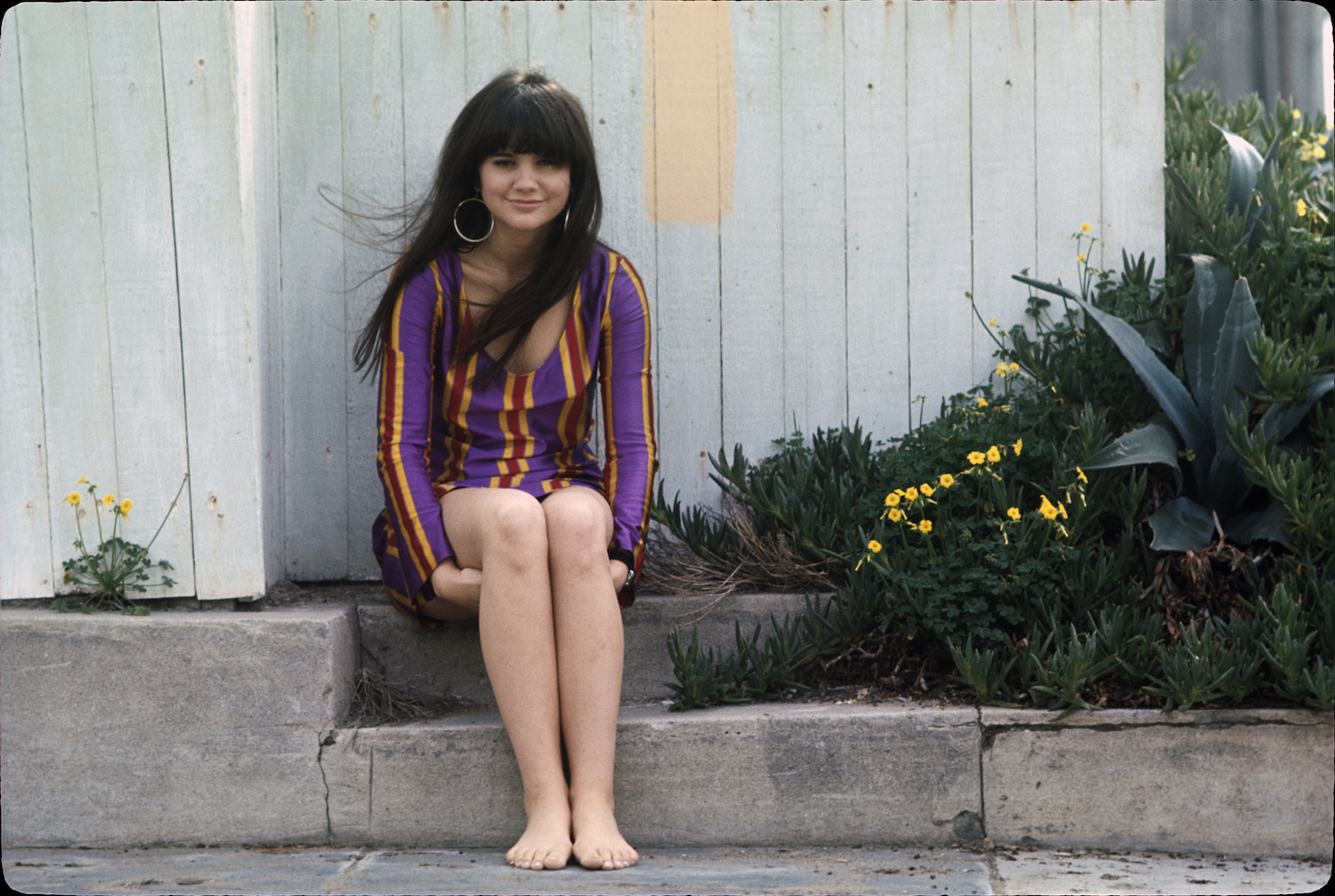
Linda Ronstadt at her home, Feb. 1968 (Photo © Henry Diltz; used with permission)
“Frank Sinatra never wrote any songs. Elvis Presley never wrote any songs. Neither did Linda,” says Diltz. “But she had the knack for picking out, instinctively, what songs were going to be good for her.”
If you’re a new Best Classic Bands reader, we’d be grateful if you would Like our Facebook page and/or bookmark our Home page.
She had recorded the 1967 hit, “Different Drum,” with her band the Stone Poneys. Diltz tells Best Classic Bands, “She was on the scene, one of the gang. No airs. We all loved her.” He recalls another unique quality. “She was always barefoot. Even on stage.”
Watch the Stone Poneys perform “Different Drum”
As a solo artist, her first singles stalled on the chart. That all changed with her cover of “You’re No Good,” which reached #1 in 1975.
“Every songwriter wanted to get something to her,” says her early producer and manager, John Boylan. “She took over those songs.”
Jackson Browne was another prominent member of the “second wave.”

Jackson Browne at the Hollywood Bowl, Aug. 1973 (Photo © Henry Diltz; used with permission)
“I was writing songs and playing open mic night at the Troubadour,” he says. Browne was introduced to the artist management team of David Geffen and Elliot Roberts. “We knew songs, and we knew artists. But we couldn’t get a deal for Jackson,” says Roberts. “No one wanted him. So we started our own [label, Asylum Records] for artists that we think are great.”
Browne’s debut album and lead single, “Doctor My Eyes,” became big successes when they were released in 1972. “Jackson was a mentor to all of us because he had broken through first,” says one of his friends, a singing drummer. “We all aspired to write like that.”
“His voice and his words and his melodies,” Diltz tells us. “That plaintive, yearning voice. It just kills me.”
When Glenn Frey and J.D. Souther dissolved their group, Longbranch Pennywhistle, Frey took advantage of an offer from Ronstadt to join her touring band. “I told Glenn he was a hotshot and he was going to do something someday,” she says.
At around the same time, she and Boylan saw a band called Shiloh perform. Impressed with their singing drummer, they invited Don Henley to audition for her band. The two new members discovered they were kindred spirits.
“[Glenn] had this very detailed plan of this band he wanted to start,” says Henley. “After we got back from Linda’s tour, we started the recruitment process.” The pair were soon joined by Bernie Leadon and Randy Meisner to form the Eagles.

Eagles’ Leadon, Meisner, Henley and Frey, Sept. 1973 (Photo © Henry Diltz; used with permission)
The first single from their 1972 self-titled album was “Take it Easy,” a song that Browne had been unable to finish. Frey presented some initial suggestions and the pair collaborated on completing the lyrics.
With three hit singles, the Eagles debut was a big success. They followed it up with a concept album centered around the Old West, which lacked a pop hit. Enter Ronstadt, who recorded one of the album’s Henley-Frey compositions for her own 1973 LP.
“‘Desperado’ wasn’t a hit for us until Linda recorded it,” says Henley. “She gave it wings.” It became one of the band’s signature songs.
“The whole California country rock thing exploded with Crosby, Stills, Nash and Young, Poco, Linda, Jackson Browne, and the Flying Burrito Brothers,” says Boylan. “But the Eagles took that to the next level. It was the dominant musical format of the ’70s in this country.”
The series is not associated with 2019’s documentary Echo in the Canyon, which took a different approach to explore the same, fertile ’60s music scene. Music fans will find Laurel Canyon to be worth the wait.
Watch the official trailer for Laurel Canyon
Related: Listings for 100s of classic rock tours

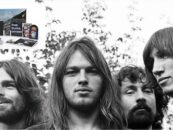

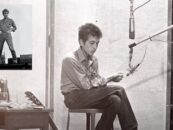
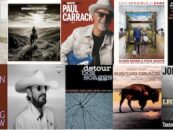

14 Comments so far
Jump into a conversationI’ve been waiting for something like this. So many “back stories” yet untold–Linda Ronstadt published a bio but it didn’t tell much–there is a book “Waiting for the Sun” that touches on the Laurel Canyon scene and if you look for it on Amazon there are others–BTW one of the BEST “unknown” LPs to come out of that era was Gene Clark’s “No Other” worth a look if you’re unfamiliar with it.
Interesting! I will give Clark’s album a listen. I bought Waiting for the Sun back in 2011, I recall liking it.
What was the canyon like previous to their arrival? Who did they kick out? ..
I think I heard/read that those houses belonged to the ‘old guard’ of the 40’s-50’s Hollywood. I don’t recall if they were the stars or the workers
I can hardly wait to see this, so looking forward to this. Great music, great people and great time in history.
“Well I hear that Laurel Canyon, is full of famous stars,
But I hate them worse than lepers, and I’ll kill them in their cars”
Neil Young on the Manson Family.
cannot wait, a seriously fan freak for Mitchell and Nyro.
Weren’t members of the Doors also living in the Canyon? If they were, why no mention of them?!
The Doors are covered in Episode 1.
Seems like all content is only available in the US, unable to view from the UK, any solutions would be highly appreciated.
Please do your due diligence and clear videos for Canada.
Not sure what you’re asking, Lucy. There’s nothing Best Classic Bands can do if the content rights holder doesn’t make the footage available.
The first episode was boring as hell. Really no substance just some old photos and a list of who took up residence there.
Nice documentary. It would be nice if somebody did one on Topanga Canyon